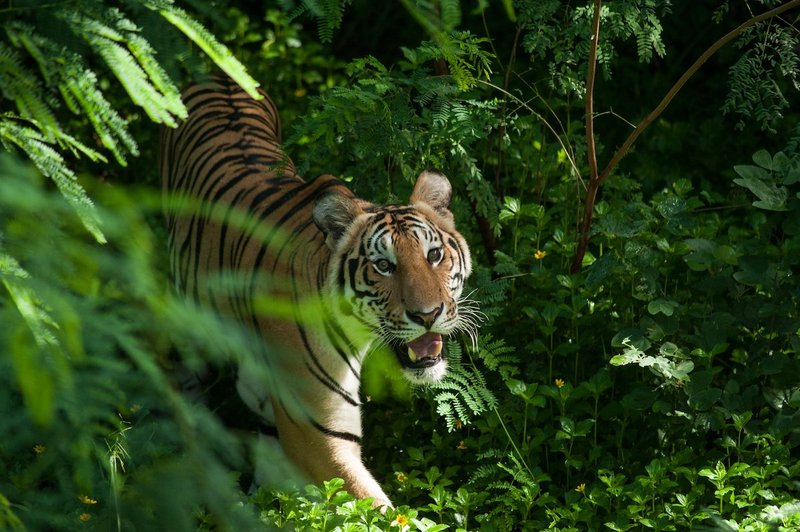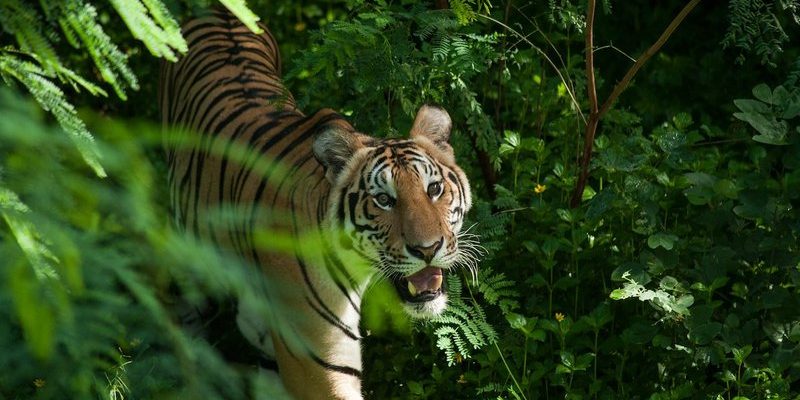
So, why should you care about the Indochinese tiger? Well, it’s more than just a beautiful creature; it’s a crucial part of the balance in its habitat. As top predators, tigers help regulate prey populations, which in turn supports the health of forests and grasslands. Without them, the whole system could start to crumble. Let’s take a deeper dive into the world of the Indochinese tiger, its endangered status, and what efforts are being made to protect it.
The Status of the Indochinese Tiger
The first thing you might wonder is: What does it mean for the Indochinese tiger to be endangered? According to the International Union for Conservation of Nature (IUCN), this tiger is classified as *Endangered*. This means there’s a high risk of extinction in the wild. As of recent estimates, there are only about 250 to 300 Indochinese tigers left in the wild. Imagine an animal that used to roam freely in vast forests, now confined to small, fragmented habitats—that’s the reality for these majestic creatures.
The primary reasons for this staggering decline include habitat loss due to human activities such as deforestation, poaching, and conflicts with local communities. As forests disappear, tigers lose their homes and hunting grounds, forcing them into closer encounters with humans, often with tragic consequences. Here’s a sobering thought: if we don’t act soon, we could lose the Indochinese tiger entirely.
Habitat and Range of the Indochinese Tiger
The Indochinese tiger is primarily found in countries like Thailand, Vietnam, Laos, and Myanmar. Think of this region as the tiger’s living room—its territory is made up of dense forests and mountainous areas rich with prey. However, this living room is getting smaller and smaller.
Over the years, human expansion has chipped away at their habitat. For instance, in Thailand, large swaths of forest have been converted to agricultural land. This not only eliminates the tiger’s natural habitat but also diminishes the availability of prey like deer and wild boar. So, what happens when a tiger can’t find enough food? It starts to venture into villages, which often leads to conflict with humans. In this way, habitat destruction creates a ripple effect, impacting both tigers and humans alike.
The Threat of Poaching
Another daunting threat to the Indochinese tiger is poaching. These magnificent animals are hunted for their skins, bones, and other body parts, which are often used in traditional medicine. While it’s hard to believe, there’s a market that values these products highly. Think of it like trying to chop down a tree while sitting on one of its branches—it’s unsustainable, and eventually, it will hurt everyone involved.
Conservation groups are aggressively working to combat poaching. They’re stepping up anti-poaching patrols, using technology like camera traps to monitor tiger populations, and implementing stricter laws. You might also hear about community engagement programs designed to educate locals about the importance of preserving tigers and their habitats. It’s a complex challenge, but every effort counts.
Conservation Efforts for the Indochinese Tiger
There are numerous organizations dedicated to the conservation of the Indochinese tiger. For instance, the World Wildlife Fund (WWF) works tirelessly on various fronts—from conducting research to protecting habitats and supporting local communities. Their motto is simple yet profound: “Protect the tiger, protect the forests.”
One fascinating approach they implement involves working with local communities. By providing alternative livelihoods, such as eco-tourism opportunities, they help locals see the value in preserving tigers rather than hunting them. Imagine being able to earn a living by showing people the beauty of nature instead of depleting it!
Moreover, international cooperation is vital for significant strides in conservation. Countries in Southeast Asia are beginning to band together to create regional frameworks aimed at tiger conservation, recognizing that the issue transcends borders. After all, tigers don’t know where one country ends and another begins!
The Role of Technology in Conservation
In today’s digital age, technology plays an integral role in conservation efforts. For example, satellite imagery and drones allow conservationists to monitor tiger habitats and track changes over time. Think of it as having a bird’s eye view of the forest—making it easier to spot areas needing urgent attention.
Camera traps are another technological advancement that has proved invaluable. They capture images of tigers and other wildlife, providing crucial data about population numbers and behaviors. These insights help in planning effective conservation strategies. Plus, they also serve as a powerful reminder of the beauty of wildlife, which can inspire support for conservation efforts.
How You Can Help
You might be wondering what you can do to assist the Indochinese tiger and other endangered species. Fortunately, there are many avenues to explore:
- Educate Yourself: Learn about the Indochinese tiger and the challenges it faces. Awareness is the first step.
- Support Conservation Organizations: Donating to or volunteering with groups like WWF can make a tangible difference.
- Spread the Word: Share information about the plight of the Indochinese tiger. Social media can amplify your voice.
- Be Mindful of Your Choices: Support sustainable products and practices to minimize your impact on tiger habitats.
All these efforts, no matter how small, can contribute to a larger movement toward conservation and protection of the Indochinese tiger.
The Future of the Indochinese Tiger
As we look to the future, the fate of the Indochinese tiger hangs in the balance. The good news is that conservation efforts are gaining momentum. More people are recognizing the importance of protecting not just the tiger, but the entire ecosystem it represents. It’s a reminder that when we protect one species, we protect a whole network of life.
However, significant challenges remain. It’s crucial that governments, NGOs, and individuals continue to collaborate to ensure habitats are preserved and poaching is effectively deterred. Every action counts. Ultimately, the goal is to create a world where the Indochinese tiger can roam freely, much like it did generations ago.
In conclusion, the Indochinese tiger is not just an endangered species; it’s a symbol of the fragility of our natural world. Protecting it means protecting our planet for future generations. If we all play our part, we can help ensure that these magnificent creatures continue to thrive in the wild, reminding us of the beauty and complexity of life on Earth.

